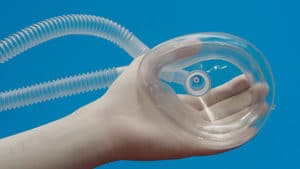Nitrous Oxide Increases Success Rates of Pediatric Dental Procedures
Researchers from the Chiang Mai University in Thailand published a study in the current issue of Anesthesia Progress that compared the success rates of pulpal anesthesia in children pre-medicated with ibuprofen when local anesthesia was combined with inhalation of nitrous oxide with oxygen or with oxygen alone.

Researchers from the Chiang Mai University in Thailand published a study in the current issue of Anesthesia Progress that compared the success rates of pulpal anesthesia in children pre-medicated with ibuprofen when local anesthesia was combined with inhalation of nitrous oxide with oxygen or with oxygen alone.
The researchers performed a single-blind study in which 33 children with pulpitis of a permanent molar were included. The children were evaluated preoperatively for fear and anxiety using the Facial Image Scale and pain using the Wong-Baker FACES Pain Rating Scale (WBFPS) in case this affected their intraoperative pain perception. During the procedure, pain perception was measured with the WBFPS.
Each child was given ibuprofen with a meal approximately 1 hour before the procedure. Seventeen children were then randomly assigned to the nitrous oxide group and 16 to the oxygen group. Once the gas was administered, the children were given nerve blocks to numb the area, and once numb, the procedure commenced.
The researchers measured the success of the procedure based on the results of the WBFSP. The method of anesthesia was considered a failure if the score was higher than 4 during any part of the procedure. Overall, the results showed a success rate of 71% in the nitrous oxide group; this was 52% higher than the success rate of the oxygen group. Compared with previous local anesthesia studies using nitrous oxide but without preoperative ibuprofen, these results showed an increased success rate in the combination of ibuprofen before the procedure and nitrous oxide during the procedure.
Given these results, the researchers concluded that local anesthesia with nitrous oxide inhalation sedation combined with preoperative ibuprofen could have an increased success rate of pulpal anesthesia in cases of severe pulpitis in pediatric patients. They also believe that these results will benefit from further studies using a larger sample size.
Full text of the article, “Effect of Nitrous Oxide on Pulpal Anesthesia: A Preliminary Study,” is available at: http://www.anesthesiaprogress.org/doi/full/10.2344/anpr-65-02-08.

